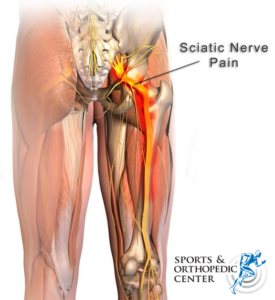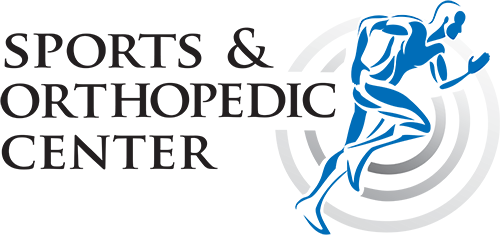Managing your sciatica pain it can seems exhausting and complicated but definitely possible. First we need to understand what is it and how to recognize it.
WHAT IS SCIATICA
Sciatica is the sense of pain, numbness, or tingling down the back of your leg, that originates in your back, and travels down your leg. In simple terms, sciatic nerve is the body’s longest nerve and affects your ability to control your legs. When this nerve is compressed, one experiences sciatica.
Sciatica – also known as sciatic neuralgia – may arise due to nerve dysfunction or compression and can worsen with physical movements, including twisting, bending, or coughing. Common conditions that can cause this dysfunction include:
- Disc bulge (Herniated disc)

The sciatic nerve is formed in the lower spine by the combination of spinal nerves L4 to S3 - Abnormal narrowing of lower spinal canal (Spondylolisthesis)
- Overgrowth of bone on the vertebrae (Bone Spurs)
- Tightened piriformis muscle (Piriformis syndrome)
- Any other spinal injury from any accident or a sports injury.
HOW CAN YOU MANAGE YOUR SCIATICA
If the pain has lasted longer than a week, or is gradually worsening, it is best to seek medical advice. In most cases, physical therapy is the first line of treatment. An expert therapist can guide you with walking, lifting, and exercising techniques to strengthen core and back muscles and prevent flare-ups.

Spinal adjustment with chiropractic manipulation, also can help reduce sciatica symptoms.Treatment normally involves using the hands or a device to quickly apply controlled force to a joint. The aim of this is to improve the quality and range of physical movement.
In addition, we reccomend alternative therapies as acupuncture and yoga however their effectiveness is unknown.
Don’t forget that your acceptability and commitment to any physical therapy is particularly important for successful outcome.
WHAT TO DO IN CHRONIC CASES
Doctors may advice epidural steroids to reduce inflammation and pressure on the nerve. Corticosteroid and anesthetic injections are inserted into the space between two vertebrae to loosen the tighten muscles and provide relief from pain.
If the non-invasive treatment is ineffective for long, doctor may recommend surgical intervention.
The spinal decompression focuses on eliminating the suspected cause of the sciatica. If your sciatica is caused by a herniated disc or spinal stenosis, a simple minimally invasive microdiscectomy is recommended. Lower risk for infection and less blood loss are the underlying advantages.
CONCLUSION
In conclusion, the good news is that recovery from sciatica is achievable. Now what is more important is to try and prevent any future episodes. Here are the final parting suggestions:
- Exercise regularly,
- Maintain good posture,
- Eat well, maintain a healthy weight, and
- Stay positive, stay calm, stay safe.


